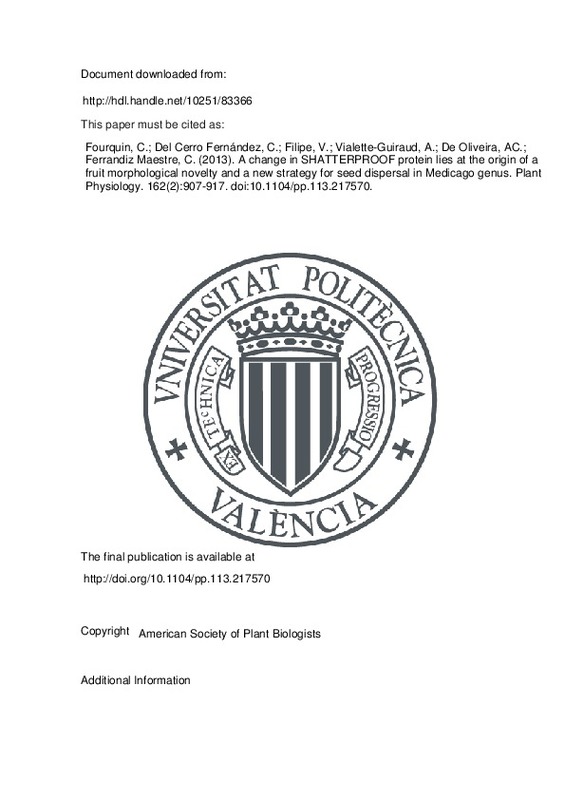JavaScript is disabled for your browser. Some features of this site may not work without it.
Buscar en RiuNet
Listar
Mi cuenta
Estadísticas
Ayuda RiuNet
Admin. UPV
A change in SHATTERPROOF protein lies at the origin of a fruit morphological novelty and a new strategy for seed dispersal in Medicago genus
Mostrar el registro completo del ítem
Fourquin, C.; Del Cerro Fernández, C.; Victoria, FC.; Vialette-Guiraud, A.; De Oliveira, AC.; Ferrandiz Maestre, C. (2013). A change in SHATTERPROOF protein lies at the origin of a fruit morphological novelty and a new strategy for seed dispersal in Medicago genus. Plant Physiology. 162(2):907-917. https://doi.org/10.1104/pp.113.217570
Por favor, use este identificador para citar o enlazar este ítem: http://hdl.handle.net/10251/83366
Ficheros en el ítem
Metadatos del ítem
| Título: | A change in SHATTERPROOF protein lies at the origin of a fruit morphological novelty and a new strategy for seed dispersal in Medicago genus | |
| Autor: | Fourquin, Chloe Del Cerro Fernández, Carolina Victoria, Filipe C. Vialette-Guiraud, Aurélie de Oliveira, Antonio C. | |
| Entidad UPV: |
|
|
| Fecha difusión: |
|
|
| Resumen: |
[EN] Angiosperms are the most diverse and numerous group of plants, and it is generally accepted that this evolutionary success owes in part to the diversity found in fruits, key for protecting the developing seeds and ...[+]
|
|
| Palabras clave: |
|
|
| Derechos de uso: | Reserva de todos los derechos | |
| Fuente: |
|
|
| DOI: |
|
|
| Editorial: |
|
|
| Versión del editor: | http://doi.org/10.1104/pp.113.217570 | |
| Código del Proyecto: |
|
|
| Agradecimientos: |
This work was supported by the Spanish Ministerio de Ciencia e Innovacion (grant no. BIO2009-09920 to C.Fe.), the European Union (grant no. FP7-PEOPLE-PIRSES-2009-247589 to C.Fe. and A.C.d.O.), and a Fellowship for Foreign ...[+]
|
|
| Tipo: |
|







![[Cerrado]](/themes/UPV/images/candado.png)


